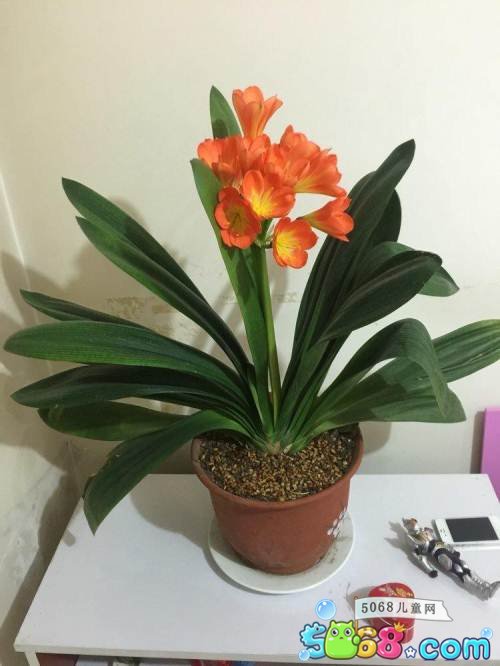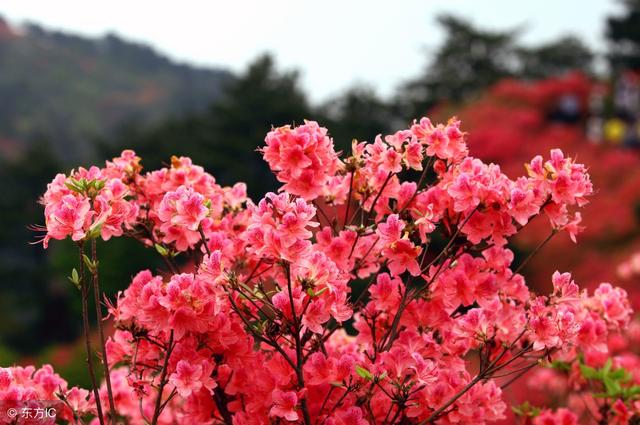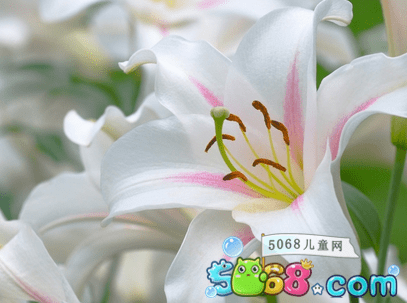Introduction to the Culture and Propagation methods of Cymbidium
Gentleman orchid is a common flower in our daily life. The flowering period is mainly in winter and spring. Its appearance is elegant and elegant, the style is gentleman, the orchid is like a flower. It is named for its high ornamental value. Gentleman orchid? This is a small series that introduces the breeding methods and breeding methods of Cymbidium.

The cultivation method of Cymbidium
At present, our country mainly uses sowing to cultivate Magnolia, thus forming a variety of varieties.
The planting of Cymbidium is relatively simple. First of all, potted soil should be chosen. It can be placed in the indoor window near the window, and fertilizer water can be mastered according to the temperature characteristics of each place. The soil must be kept moist during the growing period. High temperatures and half-sleep time should be dry, and water should be sprayed on the leaves for cooling. Junzilan Xifei, every two to three years, potted soil is added to potted soil in spring and autumn. Every year, 5 to 40 grams of cooked cake fertilizer is applied under the potted soil before the growing season, and the liquid fertilizer grows once.
In management, the flume should be turned frequently to prevent the blade from deviating to one side. If there is a party, it should be corrected in time. When the temperature is 25 to 30 degrees, it is easy to make the leaves grow, narrow the leaves and affect the decorative effect. Therefore, the cultivation of Cymbidium must pay attention to adjust the room temperature.
The leaves of the genus Cymbidium are broad and banded, with a hard, thick texture and glossy texture pattern. The leaves are stacked in two rows from the short stem at the root. If properly managed, the leaves will be neatly arranged and more beautiful. Buds are extracted from spider mites and usually blossom when they have 20-25 leaves. It blossoms from New Year's Day to the Spring Festival and in the summer from June to July. After flowering, a small number of seeds can be formed and artificial pollination is needed. After 240-270 days of sowing, the seeds can mature.
The root of gentleman orchid is milky white, very thick, very succulent. There is a certain correlation between roots and leaves. When new roots and leaves grow, new leaves are also emitted. If the root is injured or necrotic, the corresponding leaves will wither; the leaves will be destroyed, which will also affect the roots. The root of gentleman orchid is thick and fleshy. The base of the leaves forms a pseudobulb; the leaves are leathery and dark green. Umbels have several to dozens of flowers; flowers funnel-shaped, erect, orange-red. Its variant is Va.aurea Regel. Flowering in winter and spring. Strong sex, like warm, humid and semi-overcast environment. It needs good drainage and fertile fertility. I can't bear the cold. In southern China, magnolia can arrange flower beds or cut flowers, and the north and north of the Yangtze River can be used as indoor potted plants.
Magnolia is native to the tropics. It is semi-overcast and the temperature is 10 to 25 degrees. It is suitable for growing in loose and fertile slightly acidic soil.
How to breed Cymbidium
Magnolia usually uses only two methods of reproduction: one is sexual reproduction, that is, sowing and reproduction, and the other is the method of spreading ramets in asexual reproduction. Large flowers such as orchids are more commonly used for sowing and reproduction. The advantage of breeding methods is that they can be multiplied to meet the needs of many growers. However, sowing and breeding should first be carried out through artificial pollination, preferably through cross-pollination (high fruiting rate). After pollination by different plants, strong plants can usually be sown in 10 seeds; only a few seeds can be sown by the same plant.
Sowing method
The method of pollination is: when the flower splits for 2-3 days, when the bud matures and the stigma secretes mucus, that is the time for pollination. When pollinating, pick up the pollen of the stamens with a new brush and gently shake it on the stigma of the pistil. To improve the setting rate, pollination can be carried out between 9-10:00 and 2-3 p.m., and the seeds can mature after about 8-9 months. When the pericarp gradually changes from green to dark purple, the ears can be cut off and the seeds can be peeled off after 10-20 days. Before sowing, soak the seeds in warm water at 30-35 °C for 20-30 minutes, remove them, and let them dry for 1-2 hours. If you can soak them in 10% sodium phosphate solution for 20-30 minutes, remove them and wash them. It can be sowed into the culture soil by soaking in clean water for 10-15 hours. The seed pot after sowing was placed in an environment of 20-25 °C at room temperature and about 90% humidity, and the radicle germinated within 1-2 weeks.
Prepare to cultivate soil before planting and reproducing. There are many materials that can be used to produce cultured soil, but one of the more easily available materials is to use loose soil, in which enough humus comes from the forest surface and mixed with clean fine sand.
Gentlemania is a slightly acidic soil with a pH value of 6-6.5. The time required to propagate Cymbidium by sowing is not strict. It can be sown in spring, autumn and winter, but temperature is an important factor. It is better to sow seeds at 20-25 °C to meet the temperature requirements of bacteria.
Ramets method
The asexual reproduction of flowers includes cuttings, ramets, beads, grafting, etc., but the asexual reproduction of Cymbidium is usually based only on ramet methods. It is more common to use this method.
In order to propagate through the ramet method, we must first do some preparatory work:
Family potted plants should be prepared in flowerpots. The flowerpot is preferably a pot. Do not buy porcelain and ceramics, because their surfaces are very beautiful, because they have poor air permeability, which is not conducive to the growth and development of plants.
2 prepare medium soil, it is better to disinfect. If fine sand is mixed with humus soil, humus soil should be sprayed and disinfected with potassium permanganate 1000-2000 times aqueous solution; fine river sand should also be washed and disinfected with boiling water to prevent seedlings from being infected by bacteria.
3 prepare a little charcoal powder to absorb moisture from the wound to prevent decay.
4 the knife is sharp, and then dry grinding (without water) is carried out on the grindstone for dozens of times, so that the knife body is highly heated and bacteria are killed.
In the case of ramets, the mother plant of Cymbidium is first collected from the basin, and perennial buds can be found. If the daughter strain is born on the outer edge of the mother plant and the plant is small, you can hold the part of the bulb with one hand, hold the base of the seed plant with the other, and then tear off the sputum. Remove the seed plant from the mother; if the strain is thick and difficult to squat, it should be cut off with a prepared sharp knife. Don't be strong, so as not to damage the seedlings. After cutting the seeds, the wound should be immediately coated with dry charcoal powder to absorb liquid to prevent decay. Next, plant the seedlings on the pot.
When planting, the planting depth should bury the false bulb at the base of the seed plant, the part of the seedling should be slightly higher, and should be covered with disinfected sand. Immediately after planting, pour the water into the water. After 2 weeks, after the wound healed, a layer of culture soil was added. It usually takes 1-2 months to produce new roots and 1-2 years of flowering. Cymbidium propagated by ramet method is relatively stable in heredity and can maintain various characteristics of the original species.
Time: 2019-05-14 Click:
- Prev

How to cultivate wild Yingshan safflower
How to cultivate azaleas? Five cultivation techniques of rhododendron is the provincial flower in many areas. It has high ornamental value. It can be planted in the garden or in the garden. Here are five breeding techniques for rhododendron, which can be seen by those who like flowers and plants. First of all, azaleas can be kept at home / can be blocked.
- Next

Culture methods and propagation methods of jasmine
Purple jasmine is a kind of herbaceous flower. It is a common plant in our life. Jasmine is suitable for planting gardens. It is often cultivated as an ornamental flower in the north and south. It is a kind of ornamental flower. So what are the breeding methods and breeding methods of jasmine? Let's take a look.
Related
- Fuxing push coffee new agricultural production and marketing class: lack of small-scale processing plants
- Jujube rice field leisure farm deep ploughing Yilan for five years to create a space for organic food and play
- Nongyu Farm-A trial of organic papaya for brave women with advanced technology
- Four points for attention in the prevention and control of diseases and insect pests of edible fungi
- How to add nutrient solution to Edible Fungi
- Is there any good way to control edible fungus mites?
- Open Inoculation Technology of Edible Fungi
- Is there any clever way to use fertilizer for edible fungus in winter?
- What agents are used to kill the pathogens of edible fungi in the mushroom shed?
- Rapid drying of Edible Fungi

